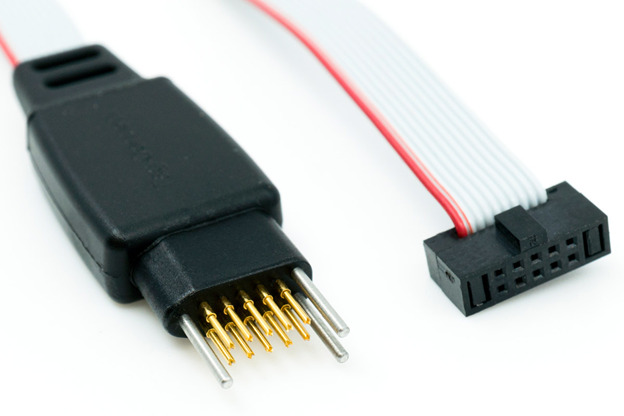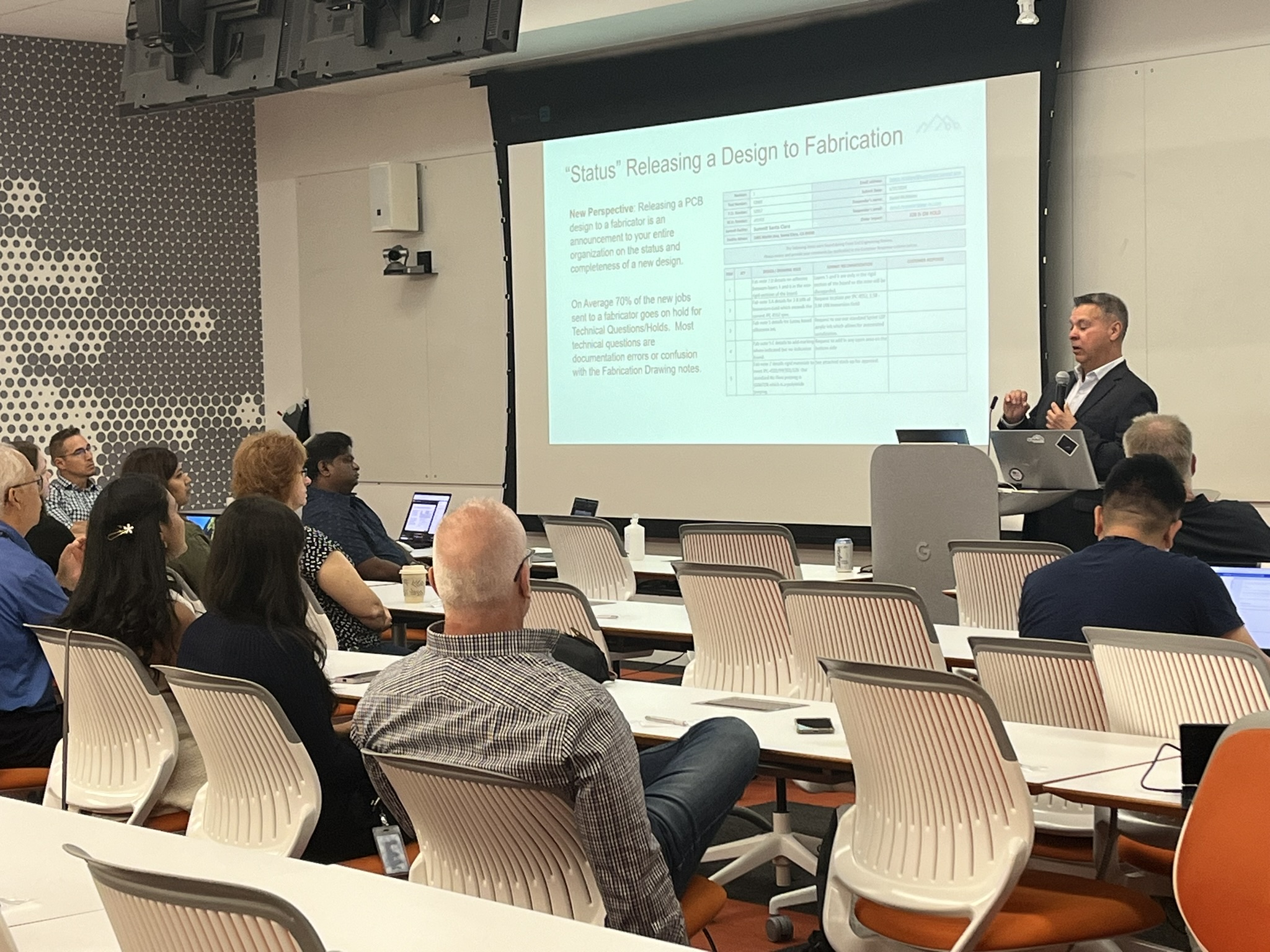Off-board connectors are expensive to purchase and usually expensive to install. If they are necessary for a design, then you have to bite the bullet and purchase them. Fortunately, the cost is amortized over the lifetime of the project. For most electronics projects though, the often-used rectangular programming headers are one-time-use devices — and it’s hard to justify the extra BOM expense for a part whose entire useful lifetime is about three minutes.
For large projects, most engineers get around this by creating a spring-loaded test/programming fixture. But the cost of that is usually 4-5 figures. So what’s a medium-sized project engineer to do?
Enter the Tag-Connect — a one-time purchase / many-time-use spring-loaded programmer. These cables plug into your favorite programmer/debugger and transfer signals and power between your programmer and your PCB.
After you purchase the connector, you simply need to add a test-point to your pcb-layout library and voila, you’ve got a free programming header for all of your future projects.
As projects continue to decrease in size, some engineers don’t want to sacrifice the layout space, so the folks over at tag-connect have created edge-connect — headers that connect through castellated vias on the perimeter of a PCB.
Granted, the tag-connect and edge-connect won’t be right for every project, but it’s another idea to add to your toolkit in case it makes sense for a future project.



